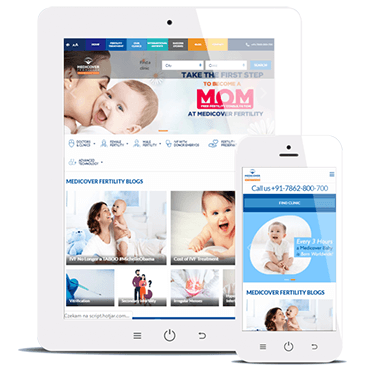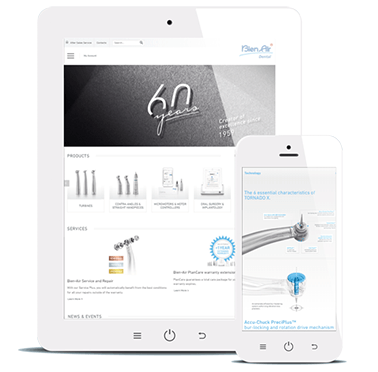Not so long ago, teaching methods were limited to the use of chalk and blackboard, note-taking, and memorization of information through repetition. Today, however, in addition to being much more creative in the process of solving various tasks, we also have the Internet and other modern devices as educational resources.
And indeed, as technology evolves, so does education. While on the one hand, Albert Einstein once said: "Teaching in schools should be given in such a way that students consider it a precious gift and not a heavy duty", on the other, Peter Drucker, considered one of the greatest theorists and thinkers of the 20th century said: "Universities will not survive. The future goes beyond campuses and traditional classrooms. Distance learning is fast approaching." Modern technology is changing the world around us – we expect quick and easy access to information, but also interactivity and solutions subordinated to our needs.
What is E-learning - just in general?
I agree with the statement that this is the future of teaching. Not only in the context of education, which comes to mind first but also in business. In an economy that is based on knowledge, innovation, and a high pace of work, the value of companies depends on a.o. easily accessible and digestible knowledge. Distance learning, through the use of multimedia content, becomes more effective as well as enjoyable.
The undeniable advantage of e-learning is the much lower cost compared to traditional forms of teaching. It is not necessary to rent training rooms, hire lecturers or outsource the organization of the course each time. Employees are not forced to stop work and waste time commuting. The problem of setting a convenient date for everyone also disappears. I would even be tempted to say that e-learning is a kind of symbol of the present times.
Modern tools (internet, intranet, mobile VR) are used to provide all kinds of information (interactive courses, presentations, animations, exercises, tests). And most importantly, it continues to grow. A very good example of innovation is platforms such as interEdu and ePhysiology operating in a 3D environment. They contain a series of lectures, exercises, and exams on biological-medical and engineering issues.
They enable students to conduct experiences in the virtual world, often not available in any other form for financial or logical reasons. It is safe to say that they are a unique phenomenon on a European scale. Through virtual and interactive tasks, it is easier to understand and assimilate the mechanisms of “how the world works” than just by listening to the lecturer.
 Visual culture, the cult of the image
Visual culture, the cult of the image
We live in the times of the so-called “visual culture”, and at its base in modern technology. A large number of experts believe that through quick access to information and due to the widespread communication noise and high pace of life, our way of functioning in society has changed. People get bored much faster and lose patience. That is why they are looking for information that is concise and easy to read, and the Internet has become a permanent element of everyday life.
One of the consequences of this phenomenon is the progressive decline in readership, combined with the simultaneous increase in the popularity of visual and interactive materials. These trends can be seen very well every day on social media. Videos, photos, and infographics are particularly popular, as a result of which we reach for longer articles much less often. Some believe that humanity is coming full circle.
We started with the visual culture and now we are returning to it, only instead of a stick we now have computers at our disposal. Looking at these trends, one can either sound the alarm and use traditional education methods by force, or use the trends to one’s advantage. In this regard, e-learning, for example, is great as an approach that is convenient and provides reliably prepared, attractive materials. What’s more, by delivering them to trainees at a place, time, and on any device of their choice.
Generation “Z” is the future
The world and people are changing – their behaviors, predispositions, and daily functioning. This is most evident in children and young people. The young generation is coming of age in the presence of social media and mobile devices. They become a natural “playground” for them, a way to communicate with the environment, as well as a place to acquire and deepen their knowledge.
Sparks&Honey’s research shows that at least 85% of students search for information online. About 30% are taking online lessons, and 20 are reading texts in ebook form. Is this not another argument for the growing role of e-learning in the future – not so distant at all? The vision that education can completely move to the Internet is quite shocking.
However, according to Andre Haardt, director of Squla - students are used to new technologies and will use them regardless of the development of e-learning. The attractiveness of this form of education prompts them to study “after school” as well. On the other hand, experts from the THINKTANK Center for Dialogue and Analysis believe that the dynamic development of technology and widespread computerization will give rise to a hybrid model of education combining the traditional form and that in the virtual space.
 What do the numbers say?
What do the numbers say?
Source: www.elearningindustry.com/elearning-statistics-and-facts-for-2015
According to the elearningindustry.com portal, the global e-learning market grew by about 9% in 2015. Interestingly, among the most rapidly growing countries in this regard was Poland with a growth of about 28%. Still, the largest buyers of such platforms and services in the world are the largest corporations and enterprises, accounting for 30% of shares.
Source: www.wearesocial.net/blog/2015/01/digital-social-mobile-worldwide-2015
Research conducted by We Are Social indicates that the traffic of mobile users on the Internet is definitely increasing. It already accounts for 49% and is growing month by month at the expense of desktop devices. Interestingly, the CSO’s report “Information Society in Poland in 2014”, conducted last year, shows that the main reason for not having Internet access at home is no longer financial or technical capabilities, but simply a lack of desire.
Restrictions on access to the Internet and new technologies are steadily decreasing. The markets for fixed and mobile devices are beginning to level out. The culture of “being online” is beginning to reach a point where most people feel comfortable and natural in the online environment. Naturally, people are beginning to expect a similar level of convenience and accessibility to educational content.
What benefits do we derive from this form of learning?
Being at the current stage of e-learning development in Poland, we use to the greatest extent convenient platforms that allow us to collect and share knowledge. Thanks to them, it is possible to further education at any time and in convenient conditions, e.g. at home, on the road, or at leisure.
Such a system allows you to freely manage the time you want to devote to learning. The use of mobile solutions greatly facilitates such a way of acquiring knowledge. Multimedia and interactivity are definitely one of the most attractive elements of contemporary communication. Modern courses and training are much more engaging and facilitate the acquisition of knowledge than classic methods.
Let’s not forget that this form of communication stimulates more senses at the same time, thus allowing for their efficient development. Of course, the benefits of this form of learning are not only enjoyed by learners. E-learning is also a convenient solution for those imparting knowledge. The training database can be updated quickly and conveniently, and access to it can be adjusted according to current needs.
Once prepared, the teaching materials can be used repeatedly. In addition, the “confusion” associated with the stationary organization of teaching classes disappears. Increasingly, e-learning platforms are offered in the form of cloud services. The solution which appeared in Poland relatively recently is gaining growing crowds of supporters. It is not difficult to be surprised – no need to install software, unlimited number of users, relatively low costs, no need to have your own server room, service, and automatic updates. Docebo’s forecasts indicate that in the coming years, this form of e-learning will be dominant.
The most popular e-learning trends?
In my absolutely subjective opinion, the following deserve special attention:
E-learning platforms – understood as a base, structure, or software that enables the collection and sharing of knowledge. From simple portals to more advanced systems and web tools.
Education of the youngest – e-learning as I mentioned earlier, is not only a domain reserved for companies or academic centers. It is also an increasingly better-developed offer for young users and children starting their adventure with education (for example, Duckie Deck or Squla).
Virtual reality (VR) - modern technological capabilities and the use of a 3D environment allow the development of attractive and practical courses, training, and exercises (such as the previously mentioned interEdu or ePhysiology).
m-learning – the use of mobile devices and applications as components of a larger e-learning platform or as stand-alone units, allowing learning anywhere, anytime.
Massive Open Online Courses (MOOC) – in other words, online classes and “live” courses. It sounds a bit like science fiction, but it’s already an existing phenomenon. The best example of this is Harvard, where over 30,000 people attended online lectures.

Summary
Not so long ago, few would have believed in such a rapid development of technology. It was not expected such widespread access to the Internet or mobile devices on which we can use it. Today, these issues have become standard. A smile appears on my face at the thought of what extent and in what direction the issue of distance learning can develop…yes, e-learning is the future of education!



 As mentioned above, clients from all over the world rate our comprehensive approach to project implementation and business consulting, which is why Clutch has considered uss a leading eCommerce Software Development Team in Poland. That is, however, not all.
As mentioned above, clients from all over the world rate our comprehensive approach to project implementation and business consulting, which is why Clutch has considered uss a leading eCommerce Software Development Team in Poland. That is, however, not all. In our daily work, we help to develop our clients' businesses. Their trust and effective cooperation make us grow as well. In January, 2022, the new edition of the Forbes Diamond Award report was published and we were proud to be listed among the fastest-growing Polish enterprises in this prestigious report. And as we help to develop our clients' businesses by doing our utmost best, their thrust and cooperation mean a lot. Indeed, we will only continue to grow together!
In our daily work, we help to develop our clients' businesses. Their trust and effective cooperation make us grow as well. In January, 2022, the new edition of the Forbes Diamond Award report was published and we were proud to be listed among the fastest-growing Polish enterprises in this prestigious report. And as we help to develop our clients' businesses by doing our utmost best, their thrust and cooperation mean a lot. Indeed, we will only continue to grow together!
 Visual culture, the cult of the image
Visual culture, the cult of the image What do the numbers say?
What do the numbers say?








